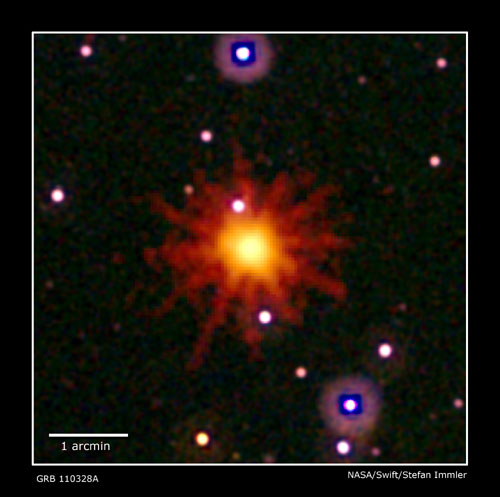Science and Health
Space telescopes observe unusual cosmic blast
(Agencies)
Updated: 2011-04-08 10:45
 |
Large Medium Small |
|
 Images from Swift's Ultraviolet/Optical (white, purple) and X-ray telescopes (yellow and red) were combined in this view of GRB 110328A. The blast was detected only in X-rays, which were collected over a 3.4-hour period on March 28. [Photo/NASA] |
The gamma-ray explosion was observed on March 28 by NASA's Swift satellite. Flaring from such an event usually lasts a couple of hours.
Scientists say this blast is unusual because the effects are long-lasting. More than a week later, they continue to see high-energy radiation spiking and fading at the source.
The burst was likely caused by a star that was ripped apart after drifting too close to a supermassive black hole.
Since the explosion, the Hubble Space Telescope and Chandra X-ray Observatory have focused on the aftermath. Hubble will observe if the galaxy's core changes brightness in the coming days.
The galaxy is 3.8 billion light years from Earth. A light year is about 6 trillion miles (9.6 trillion kilometers).
| 分享按钮 |